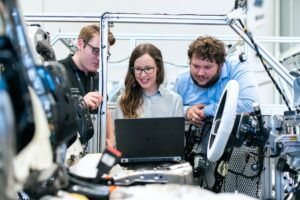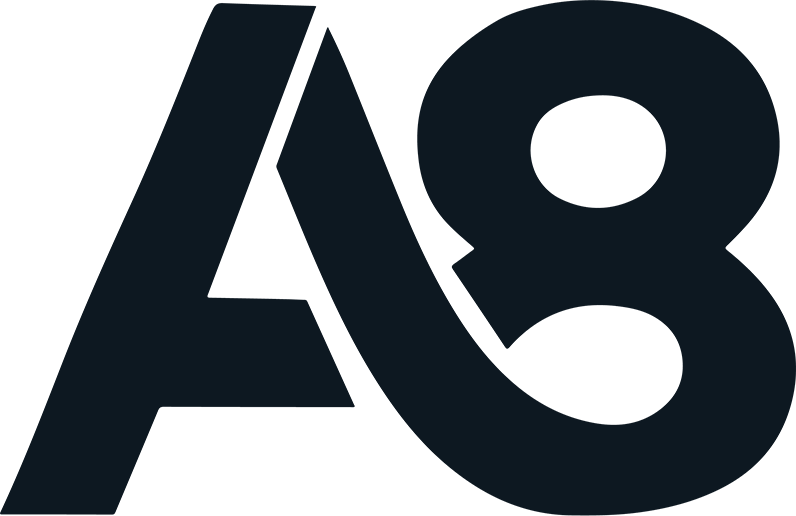From TRL 4 to TRL 6: A challenging milestone in technology development
The transition from TRL 4 to TRL 6 represents both a major milestone and a significant challenge to innovators. In fact, it is often referred to as the ‘valley of death’ in technology development. At this phase, most innovations originating from research fail to progress further and die. So, here lies a big problem, not only to innovators, but also to society. Tragically, we may be missing out on many potentially breakthrough ideas that could make a radical difference to the way we live.
This tends to happen because of a fundamental missing link in the industry-academia collaboration and funding ecosystem. Academics assume that industry players will be willing to pick up their technology at TRL 4. On the other hand, industry is often unwilling to invest in technologies before TRL 6 or TRL 7. Therefore, there is a gap in the middle that must be bridged for the technology to survive on the path towards commercialisation. Essentially, what is required is the necessary capital resources and human effort, to successfully bring the technology from TRL 4 to TRL 6.

The valley of death in technology development. Credit: PWC
This issue seems to be particularly problematic in the European region. In fact, Europe has a shortage of research-backed startups and unicorns compared to stronger regions such as the US and China.
Luckily, funding bodies are aware of this gap and are providing promising innovators with the resources required to bridge it. For instance, the European Commission is addressing this in a number of ways. Particularly, the EIT (European Institute of Innovation & Technology) and the EIC (European Innovation Council) have been set up to help technologies survive the valley of death and make it to the marketplace.
TRL 4 to TRL 6: Mirroring improvements in technology maturity with commercial progress
After the analytical and experimental proof-of-concept validation at TRL 3, the technology validation in the laboratory occurs in TRL 4. At this level, the basic technology components are integrated and tested in order to verify that they work well together. Then, TRL 5 and TRL 6 represent a defining moment as the technology is first validated and then demonstrated in an application-relevant environment. This is the point at which the technology development starts to move away from the laboratory and innovation’s feasibility is sought in a real-world application. TRL 6 is a major step up as it requires evidence that a prototype system is able to solve a real-world problem.

In parallel, these significant improvements in technology readiness must be mirrored with corresponding milestones in commercial and business development. Importantly, innovators at this level must also focus on intellectual property protection, customer readiness and funding or investment readiness, with a strategic plan in place to acquire the necessary resources to move forward. In addition, the team must be strengthened to address any gaps in business and commercial functions, as well as technical functions associated with the application to be exploited.
Here, we summarize the important milestones in IPR, customer and funding readiness to mirror the technical developments from TRL 4 to TRL 6:
IPR readiness at TRL 4:
- Knowledge of which aspects of the innovation can be protected (patentability)
- Decision taken regarding which IPR to be patented, according to business relevance
IPR readiness at TRL 5:
- Initial IPR strategy drafted, taking into consideration the initial business strategy
- First patent application has been filed
IPR readiness at TRL 6:
- The IPR strategy is developed further to support the evolving business strategy and starts to be implemented
- An initial freedom-to-operate analysis or patent landscape analysis is carried out, in collaboration with an IPR professional
Investment readiness at TRL 4:
- Strategic funding plan including public, private and hybrid funding opportunities
- Initial pitch presenting the innovation and the possible business model options
- Applied for next-level funding to move the technology towards a specific application
Investment readiness at TRL 5:
- Investor pitch deck developed and being tested
- Financial projections and budgets being developed
Investment readiness at TRL 6:
- Investor ready pitch including financial projections has been tested with audience and fine tuned
- Discussions initiated with private and industry investors
Customer readiness at TRL 4:
- A number of customer/end user segments have been identified
- A network of potential customers/end users has been established
- Several customers and/or end users have confirmed the innovation solves a problem or need that they have
Customer readiness at TRL 5:
- Closer relationships are established with the first target customers
- Customers have demonstrated interest in the product, initial problem-solution fit
Customer readiness at TRL 6:
- First pilot projects involving customers or end users, confirming the value of the innovation (validated problem-solution fit)
- Partnerships start to be formed with value chain stakeholders

Which business objectives should you develop on the route to market?
We regularly speak with academics who are strongly motivated to see the fruits of their years of research made available to society. Apart from the gap in investment, this is complicated by the fact that the team driving the innovation often lacks the fundamental business skills required to make this happen. Now, funding bodies are shifting their focus from investing in research projects to funding market readiness improvements. This is great news for academics wanting to see their technologies survive the valley of death. However, submitting proposals to such funding instruments requires a good understanding of the business objectives required to take the technology out of the laboratory and bring it closer to consumers and society. Here, we give a detailed overview of the business objectives and milestones that are required to accompany the leap from TRL 4 to TRL 6. You can also learn more about these business objectives by reading our insights article on Business Readiness Levels.
Business objectives at TRL 4:
- Design and consolidate the business model canvas. This should include details on the value proposition, key partners, customer segments, channels, key resources, key activities, revenue streams and the cost structure.
- Work on detailed analysis of competitors and unique competitive advantage/position.
- Estimate the feasible market share, according to an analysis of the market, barriers to entry and competitive landscape.
- Work on the first financial projections according to estimates on product pricing and sales volumes to demonstrate market potential and economic viability.
Business objectives at TRL 5:
- Carry out market and end-user validation. Talk to customers, end users and value chain players to verify the business model, the commercialisation hypothesis and the competitive position.
- According to market feedback, fine tune and update the business model canvas and design a more detailed and refined revenue and pricing model.
Business objectives at TRL 6:
- Continue to test the business model and refine the pricing hypothesis on customers by carrying out pilot sales.
- Use pilot sales to test customer payment willingness.
- Develop more complete projections on profit and loss, using more detailed and well-grounded data.
- Start preparing a plan to show that the business is scalable.
Stuck at TRL 4?
We understand that it may be difficult to obtain the necessary competences and resources to move forward. Luckily, we are here to help. We have established numerous long-standing collaborations with researchers and universities across Europe on market validation, IPR & business strategy development and minimum viable product (MVP) creation. We can also assist with the acquisition of public or private funding and strengthen your team with strong business competences. This will allow your innovation to survive the valley of death and successfully approach the market. Get in touch to find out more about how we can collaborate and learn more about our most recent projects.
